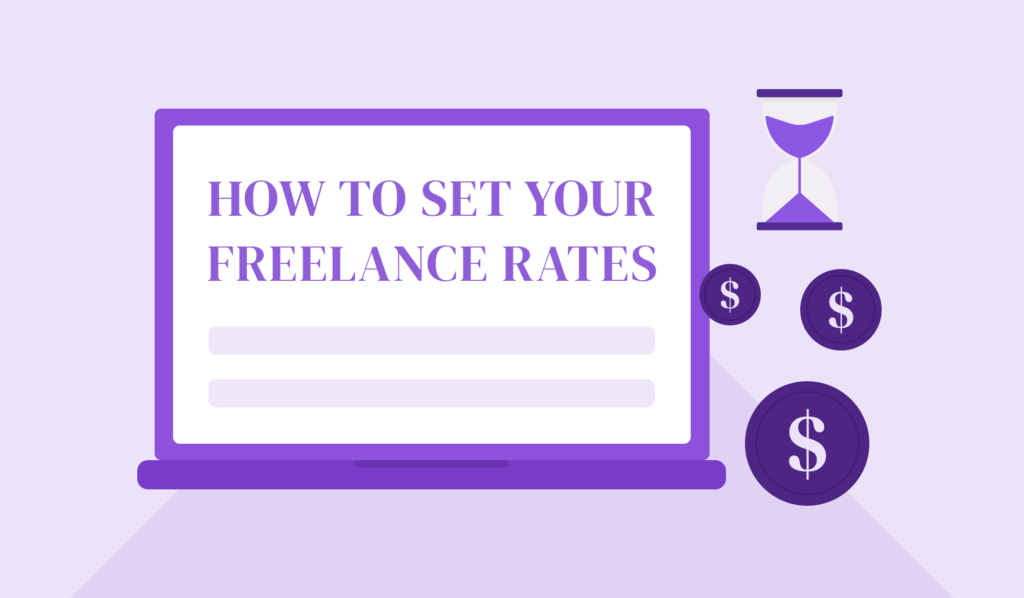
As a freelancer, one of the biggest challenges you’ll face is setting your rates. Price your services too low, and you risk devaluing your work. Place them too high, and you may scare away potential customers. So, how do you find that sweet spot that balances your value and client expectations? This step-by-step guide will walk you through the process of setting freelance rates in a way that works for both you and your clients.
1. Understand Your Worth and Value:
Before you dive into numbers, the first step is to understand your worth. What you bring to the table is more than the time spent on a project. This includes your skills, experience and the results you deliver.
Key factors to consider:
- Your experience: More experienced freelancers can often charge higher prices.
- In-demand skills: If you have skills that are rare or in high demand, your rates should reflect that.
- Previous results: Can you demonstrate that your work has delivered measurable results? It adds value.
To calculate your value, think about the impact you’ve made in previous projects. Have you increased client revenue, increased engagement, or saved time? This can help you communicate your value to potential clients.
2. Research Market Rates in Your Industry:
Once you know your value, the next step is to research the going rates in your industry. Market prices can vary greatly based on factors such as location, industry, and project scope.
Ways to research:
- Check popular freelance platforms like Upwork or Fiverr to see what other freelancers are charging.
- Join industry-specific forums or groups to ask fellow freelancers what rates they are setting.
- Check salary guides for similar roles in full-time jobs to get an idea of what your job is worth.
Don’t settle for just one rate limit; Gather as much information as possible from various sources.

3. Determine Your Financial Goals:
To properly set your freelance rates, you need to know how much you want or need to earn. This helps you determine which rates will allow you to meet your financial goals. Start by calculating your monthly living expenses, then add your business expenses (eg, software, marketing, office space).
Steps to calculate:
- Add up your fixed monthly expenses: rent, utilities, food, transportation, etc.
- Include business expenses: subscriptions, supplies, insurance, taxes.
- Number of hours worked factor: How many billable hours can you work in a week?
Once you know how much you need to earn, you’ll have a minimum base rate to start with.
4. Choose an Appropriate Pricing Model:
Freelancers typically use three types of pricing models: hourly rates, project-based rates, and retainer contracts. Each has its advantages and disadvantages, depending on the type of work you do and the needs of your clients.
Hourly Rate:
- Best for: Projects with undefined scope or work-in-progress.
- How to set: Estimate the total number of hours you expect to work and multiply by your desired hourly rate.
Project-Based Rate:
- Best for: Projects with clearly defined start and end dates.
- How to set: Estimate the time and resources required to complete the project and calculate a flat fee that includes all your expenses and desired profit.
Retainer Agreements:
- Best for: Long-term, ongoing work where you deliver a fixed amount of work each month.
- How to set: Calculate how much time you will spend per month and offer a package rate for fixed payments.
Each model has advantages, so choosing the right one depends on your situation.

5. Account for Taxes and Business Expenses:
Unlike traditional employees, freelancers have to account for their own taxes, health insurance, and business-related expenses. These costs need to be factored into your rates to make sure you’re not shortchanging yourself.
What to consider:
- Self-Employment Tax: In most countries, freelancers are responsible for their own taxes, often around 15-30%.
- Health Insurance: If you are responsible for your own insurance, it can add up.
- Holidays and sick days: Freelancers don’t get paid time off, so it’s wise to factor that into your pricing.
By factoring these elements into your rate, you’ll protect yourself financially.
6. Offer Different Pricing Tiers or Packages:
An effective way to attract clients with different budgets is to offer tiered pricing or packages. This gives clients the flexibility to choose a service that fits their budget while allowing you to sell more comprehensive offerings.
Example of tiered pricing:
- Basic Package: Includes essential services for clients with limited budgets.
- Standard Package: Adds additional features or more in-depth functionality.
- Premium Package: Offers a full range of services, including extras such as revisions or consultations.
This approach not only helps you appeal to a wider audience, but also allows clients to choose a package that reflects their value.
7. Adjust Rates as You Gain Experience:
Your rates should not be fixed. As you gain more experience, build a portfolio, and deliver results, your rates should increase. Constantly review your pricing and market rates to ensure your prices remain competitive.
When to raise your rates:
- You have more demand than you can handle.
- Your skills have improved, and you are delivering better results.
- Industrial rates have increased.
Don’t be afraid to increase your rates over time, especially if you’ve built a strong reputation with proven results.

8. Communicate Rates Confidently:
Once you’ve set your rates, you need to communicate them to clients with confidence. Don’t be apologetic or self-deprecating when discussing pricing – clients may feel hesitant. Being upfront and clear about your rates not only avoids confusion, but also builds trust and professionalism.
Tips for clear communication:
- Present your price as part of the total price you are offering.
- Be prepared to explain why you get paid for what you do, citing your skills, experience and results.
- Use a contract to clearly define the terms, deadlines, and payment structure.
Being transparent and firm about your rates shows clients that you take your work seriously.
Conclusion:
Ultimately, determining your freelance rate is a balancing act between understanding your value, doing market research, and meeting your financial needs. By following this step-by-step guide, you can confidently set rates that reflect your value, appeal to clients, and ensure your freelance business stands out in a competitive market.


